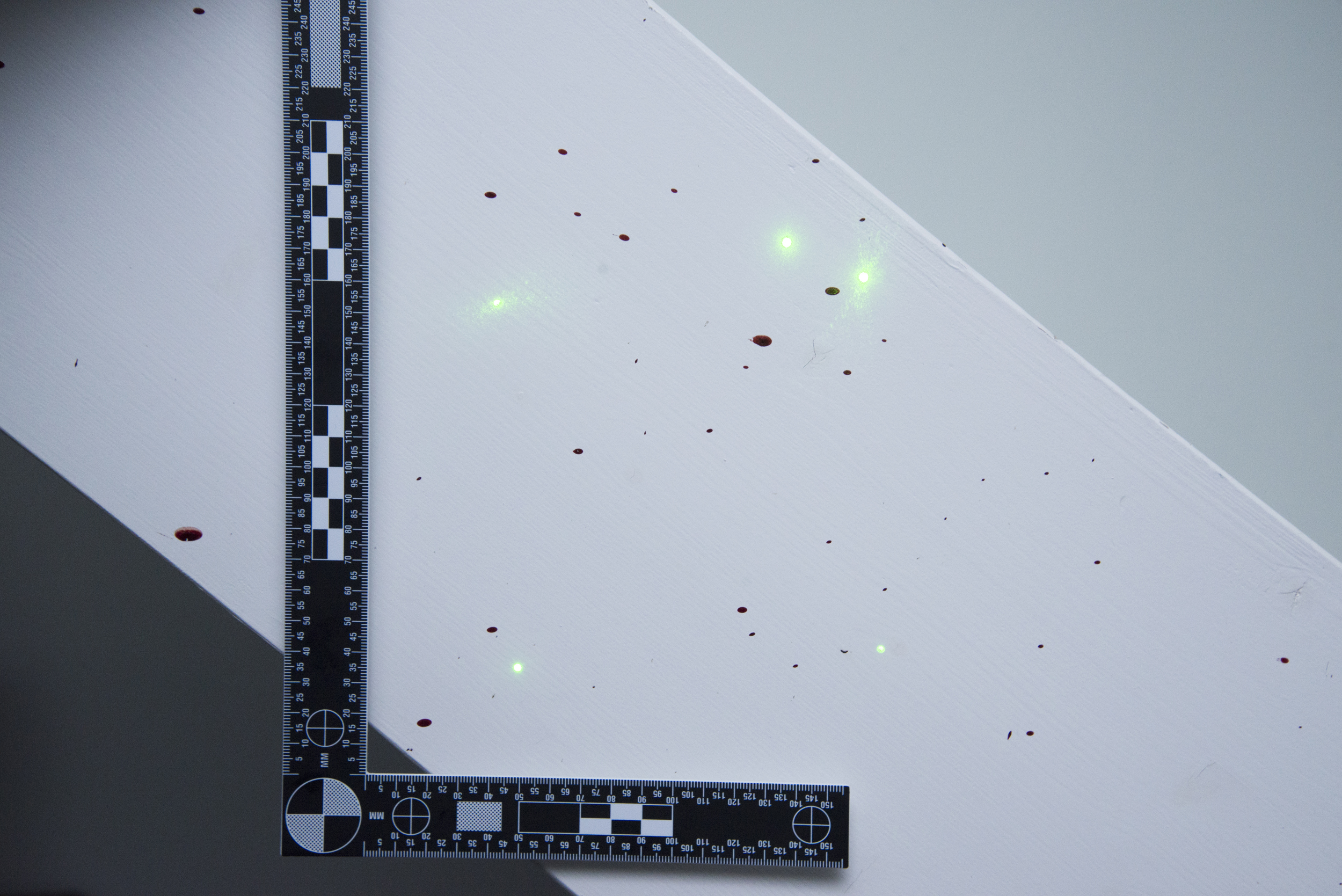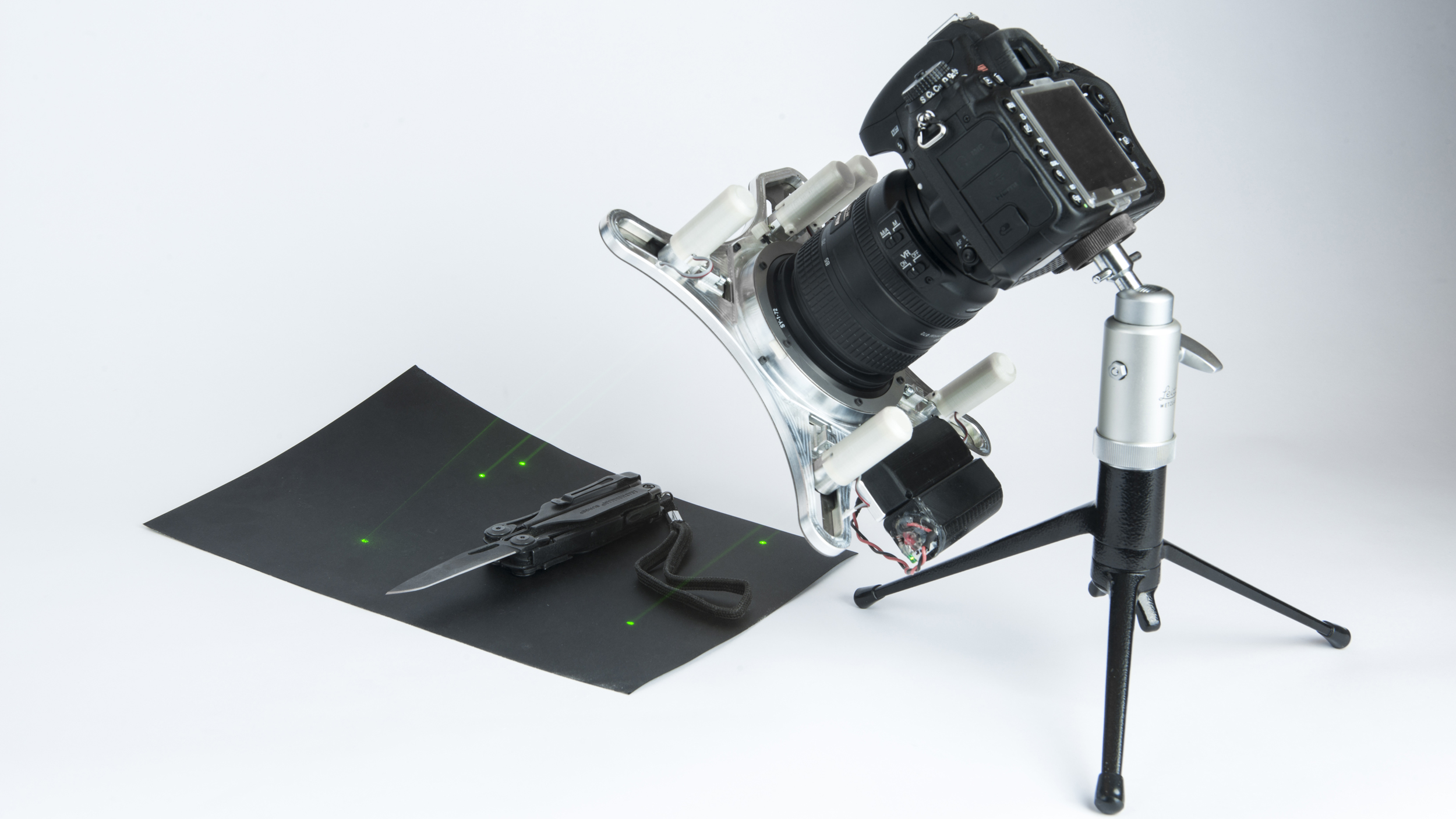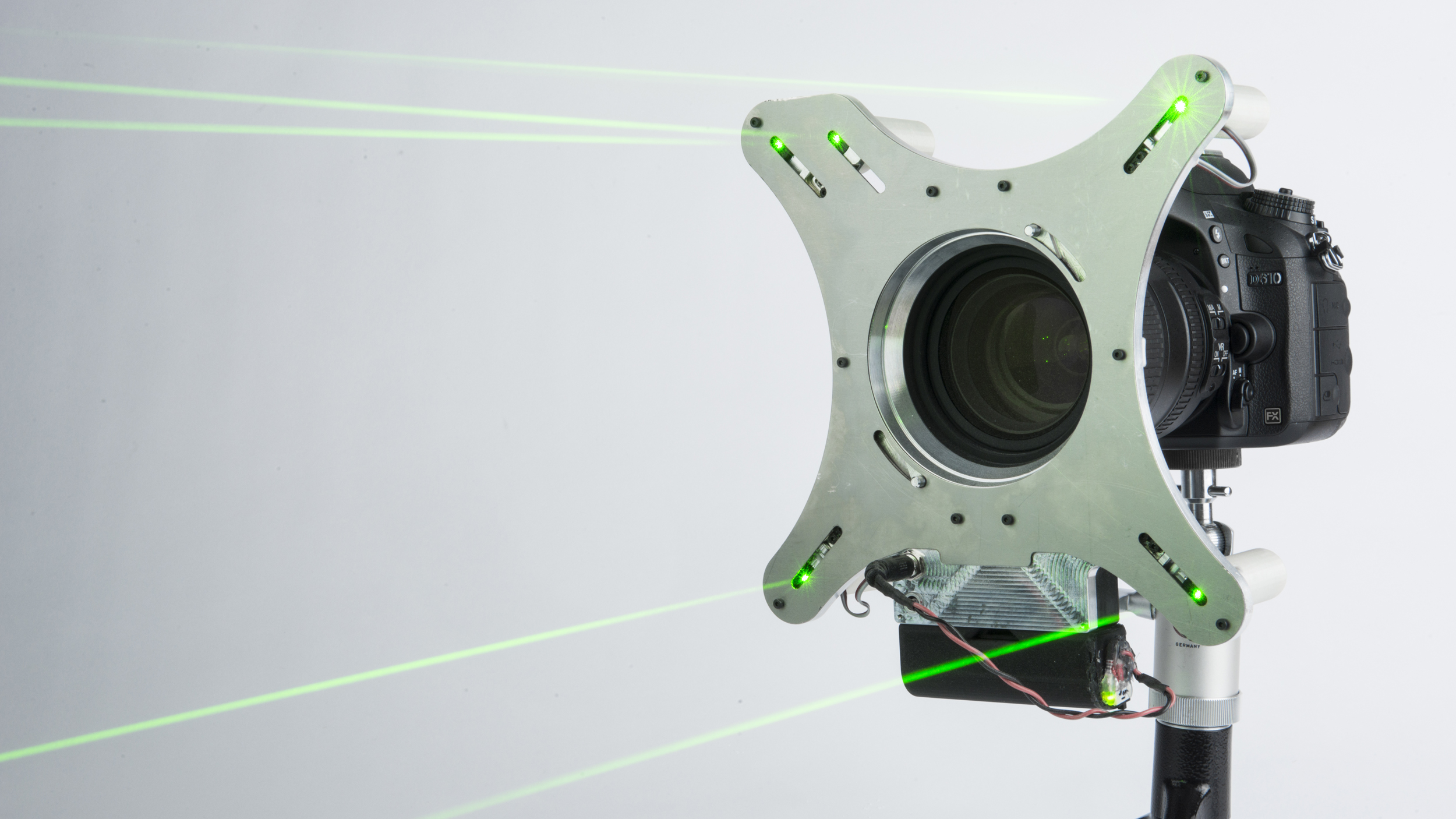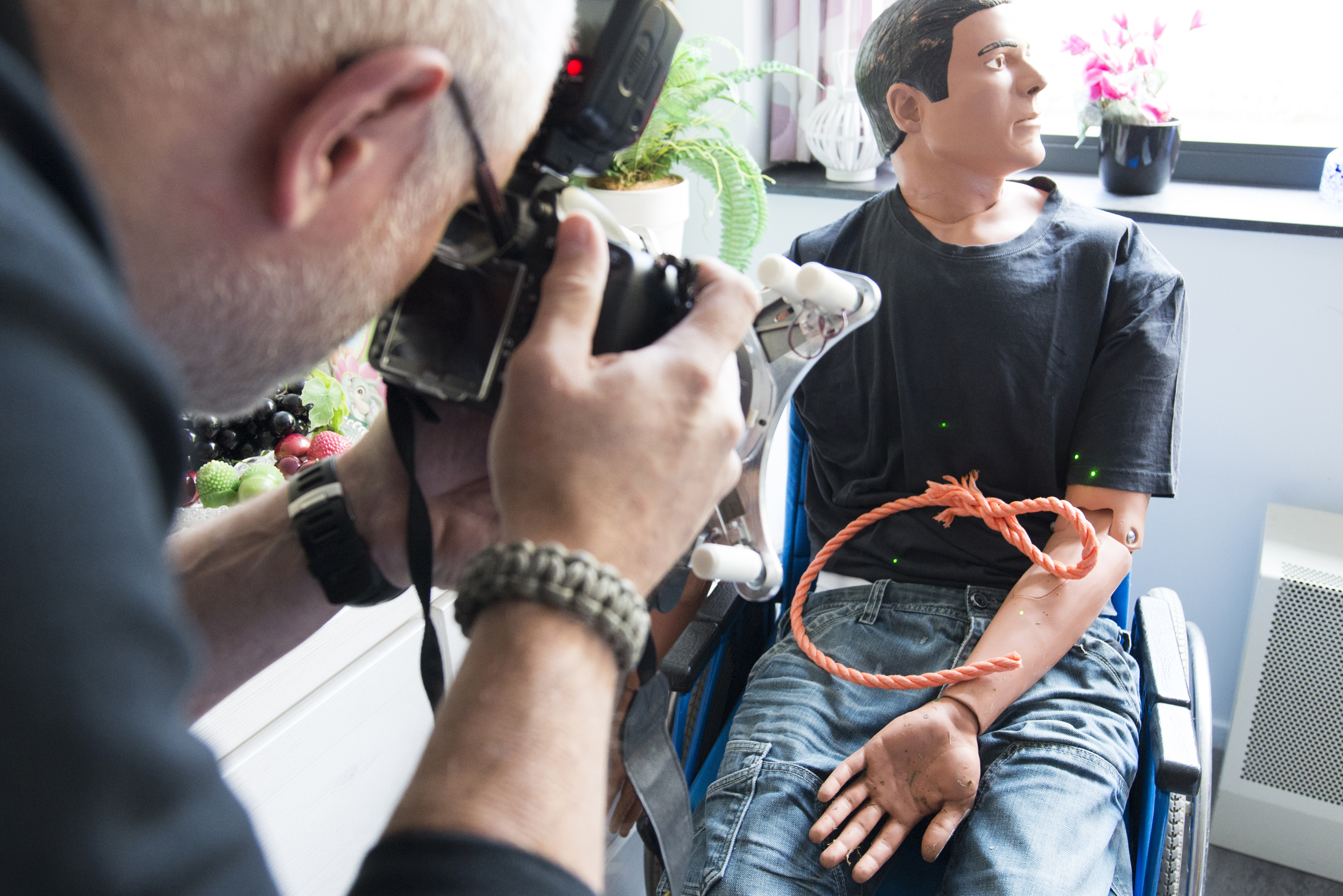‘Ruler-less measuring’ at crime scenes
Forensic scientists often use a ruler when photographing evidence, such as a blood spatter on a wall after a murder or a scratch in a window sill after a burglary. This way, they will know later on how big the piece of evidence was, and it will be possible to match a footprint, for example, with someone’s shoe size. Unfortunately, the use of a ruler can contaminate or damage evidence, and it’s often difficult to actually use. Researchers at the Netherlands Forensic Institute (NFI) and TU Delft have developed a new ‘ruler-less prototype’ that may make the use of a physical ruler at the crime scene redundant. This month, the prototype was tested for the first time in practice.
FreeRef
The Department of BioMechanical Engineering at the Delft University of Technology was commissioned by NFI to develop the ‘FreeRef’. The prototype consists of two parts: an accurate laser projector that is placed on the camera lens and software that automatically derives the measurements in the photo based on the laser projection. The FreeRef was developed by two Delft students: Luuk Schiks and Lars Lipman. Project leaders Arjo Loeve (BioMechanical Engineering, TU Delft) and Paul van den Hoven (Crime Scene Innovation team, NFI) tested the prototype with students and forensic researchers on a fictitious crime scene at the police academy in Apeldoorn. And successfully so. With FreeRef, the researchers no longer needed to constantly put a ruler in the image or hold one up when pieces of evidence were being photographed. Moreover, photos do not need to be straightened anymore in order to measure sizes from the photo – a process which takes several steps. The FreeRef can save time and reduce the danger of contaminating evidence and making measurement errors.
Paul van den Hoven
‘This test is another fabulous example of how we can create innovation by collaborating with scientists such as the Delft engineers and forensic professionals from the police and NFI. This enables us to come up with joint solutions. That’s the most important thing for forensic research in the Netherlands.’
Arjo Loeve
‘Thanks to this test we now have a better idea of how to further improve the robustness of the prototype and software. For example, as a result of the challenging situations at crime scenes, the software was not always able to detect the laser projection yet. We are going to work on that in our Engineering for Forensics line of research in the coming months.’



